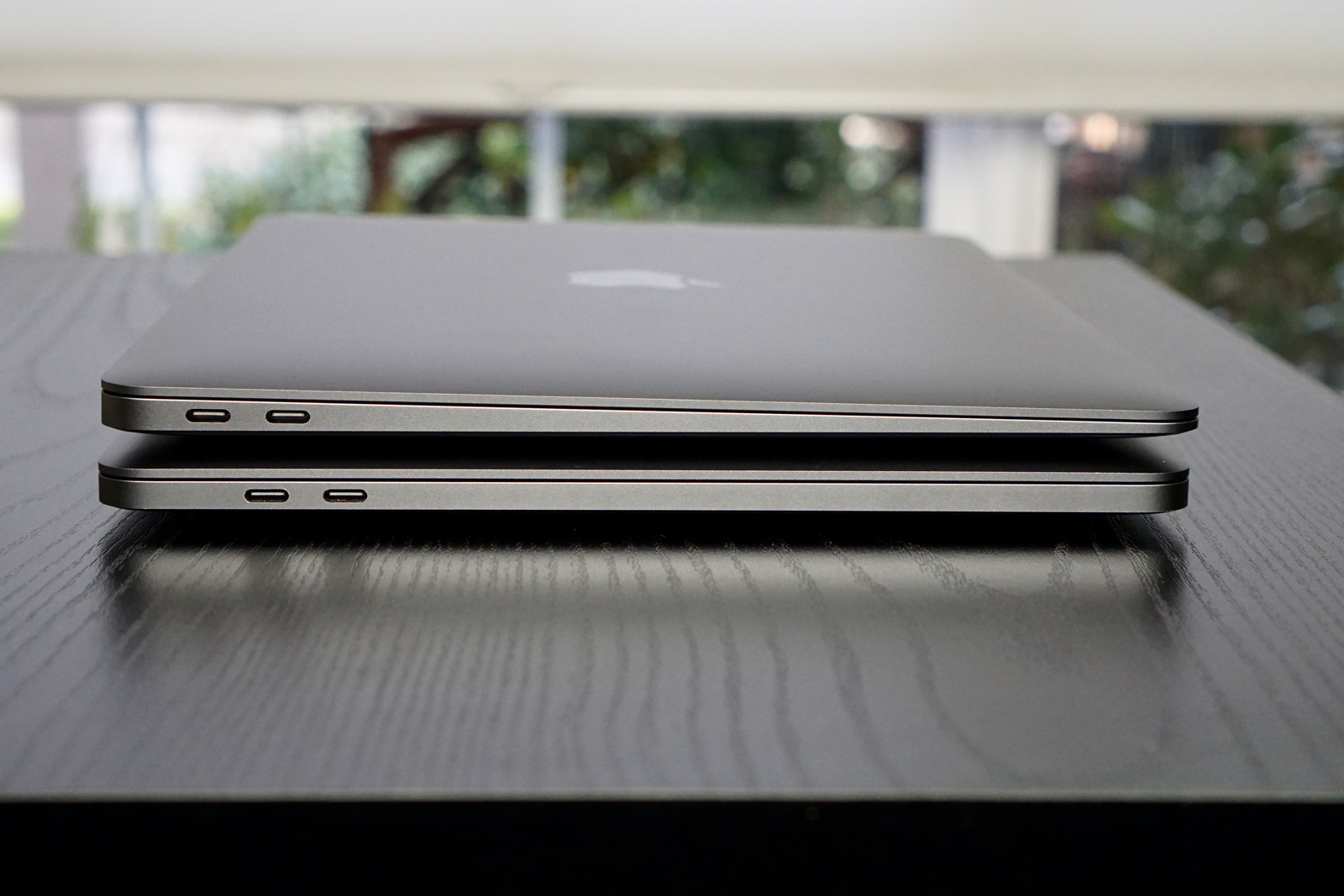

That’s a steep price for 8GB of RAM, but since you can’t upgrade it after the fact, it’s something to consider, no matter which model you buy. On each of these models (except the 2017 Air), you can double the RAM to 16GB for an extra $200. RAM speed won’t make a noticeable difference in performance (even jumping from 1600MHz in the 2017 Air to 2133MHz in the 2018 model), but if you can afford it, more RAM is always better.
2017 vs 2018 mac pro pro#
Still, they all offer slightly different GPUs, with the Pro leading the pack once again: With integrated graphics, none of the MacBooks here are going to get you very far if you’re looking to do high-end gaming or serious graphics-intensive work. MacBook Air vs MacBook vs 13-inch MacBook Pro: Graphics The Pro can also be seriously souped up, with options up to a 2.3GHz quad‑core eighth‑generation Intel Core i7 processor in the Touch Bar model and going up from there. However, you can bump it up to 1.3GHz dual-core seventh-generation Intel Core i5 processor if you desire for an extra $300. The MacBook uses Intel’s slower Core m3 processor, so it’s markedly slower than the new MacBook Air and MacBook Pro, but a bit faster than the 2017 Air. The MacBook Pro, meanwhile, uses a seventh-gen i5 with a much higher clock speed, so it’s the fastest of the lot, as it should be.

The 2017 Air uses a dusty fifth-generation Core i5 chip while the new model uses a current eighth-gen one. To the untrained eye, the old MacBook Air might seem faster than the new one. MacBook Pro: 2.3GHz dual-core seventh-gen Intel Core i5, Turbo Boost up to 3.6GHz MacBook: 1.2GHz dual-core seventh-gen Intel Core m3, Turbo Boost up to 3.0GHz MacBook Air (2018): 1.6GHz dual-core eighth-gen Intel Core i5, Turbo Boost up to 3.6GHz

MacBook Air (2017): 1.8GHz dual-core fifth-gen Intel Core i5, Turbo Boost up to 2.9GHz They’re all instantly recognizable as modern Apple notebooks, even if they no longer have a glowing Apple logo. As the MacBook is the smallest model, the keys abut the sides of the enclosure and the speakers are above the keyboard, while the 2018 MacBook Air and MacBook Pro have enough space alongside the keys for a pair of stereo speakers. The MacBook Pro, MacBook, and 2018 MacBook Air have a very similar aesthetic: Skinny black bezels flank the screen and a giant trackpad is centered below the black keys. MacBook Air vs MacBook vs 13-inch MacBook Pro: Design Jason Cross/IDG At its thickest point, the new MacBook Air is actually thicker than the MacBook Pro, but since the latter doesn’t have a wedge design, the Pro will feel a bit thicker when carrying it. Defying its surname, the 2017 MacBook Air is the thickest and largest of the bunch, clocking in at nearly two inches wider than the MacBook despite having the same-sized screen. Just 0.83 x 0.62 inches separate it from the MacBook Air and MacBook Pro, and it’s less than a tenth of an inch thinner than the MacBook Air. It also uses a twisted nematic (TN) display, which suffers from poor viewing angles and lesser overall quality as compared to the IPS displays on the other Retina MacBooks. One more tidbit: The Touch Bar version of the 13-inch MacBook Pro includes a Wide Color (DCI-P3) True Tone display while the non-Touch Bar model does not.Īs you can see, the MacBook is the smallest of the three, but not by much. It only has 128 pixels per inch, so images and text will definitely appear aliased. The 2017 Air is the only MacBook with a non-Retina display, and the difference is palpable. However, it has the same resolution as the larger retina models: The MacBook is the smallest notebook here, with a 12-inch screen rather than a 13.3-inch one. MacBook Air vs MacBook vs 13-inch MacBook Pro: Screen Jason Cross/IDG But for the sake of comparison, we’ll be comparing the non-Touch Bar model with the other models here. But, you’re also getting a lot more computer, with twice as much storage as the non-Touch Bar Pro, an eighth-gen processor, True Tone display, and four USB-C ports. If you want the Touch Bar MacBook Pro, you’ll need to spend at least $1,799, a significant increase over any of the prices here.


 0 kommentar(er)
0 kommentar(er)
